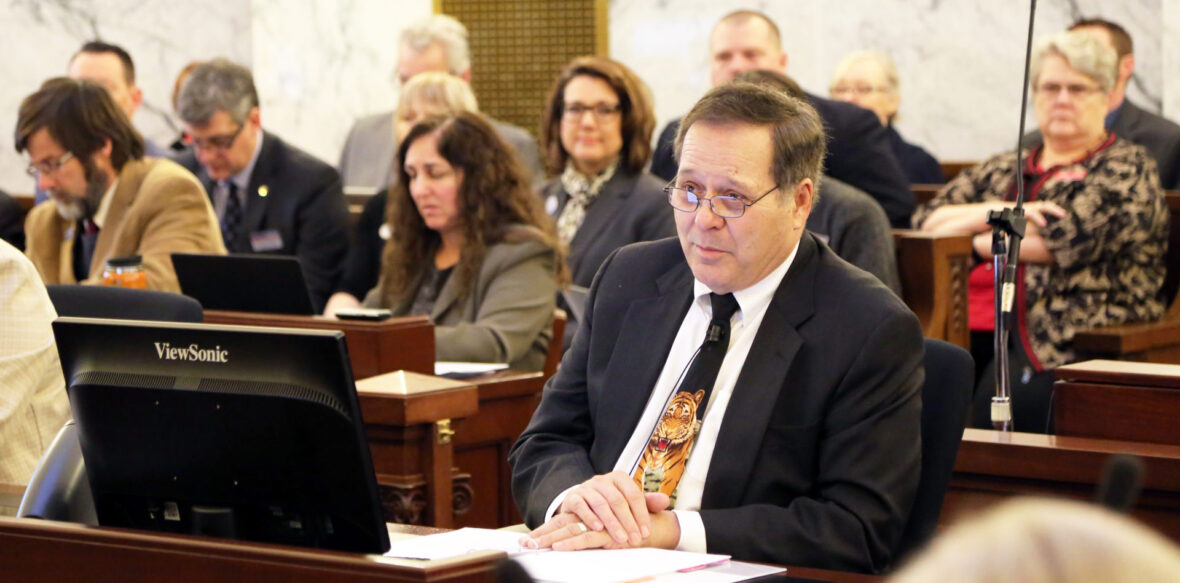Midway through his presentation to the Legislature’s budget-writers, Anthony Fernandez acknowledged the obvious.
“I am the second of the three quitters that are coming before you today,” said the retiring Lewis-Clark State College president.
It was an unusual morning for the Joint Finance-Appropriations Committee, befitting an unusual time. Perhaps for the first time in state history, Idaho is looking for three new college and university presidents. The state’s three outgoing presidents — Fernandez, Boise State University President Bob Kustra and Idaho State University President Arthur Vailas — took turns walking through their budget requests, and discussing the state of Idaho higher education.

Ultimately, JFAC will write up a budget for the higher education system. This year, Boise State, ISU, LCSC and the University of Idaho shared nearly $280.3 million in tax dollars from the state’s general fund. For 2018-19, Gov. Butch Otter is seeking a 2.3 percent budget increase for higher ed. By contrast, Otter is seeking a 6 percent increase for K-12 — and overall, his 2018-19 budget would increase state spending by 6.6 percent.
But much of Tuesday’s discussion centered on a few other line items that would also affect the universities — Otter’s $769,500 request for a higher education “CEO,” and a $5 million State Board of Education line item to boost college scholarships.
Kustra again voiced his doubts about the premise of the CEO proposal — the idea that a “chief education officer” could really wring tens of millions of dollars in savings from the higher education system. Otter wants to put $500,000 of the $769,500 into a one-time consulting contract, to try to identify money the state could save by streamlining IT, personnel or other administrative functions.
“I think it needs to start with the consultant’s study,” Kustra said.
The presidents took turns praising Otter’s scholarship proposal. Otter wants to boost the Opportunity Scholarship budget to $15 million a year — while siphoning some of the money into an “adult completer” scholarship designed to help nontraditional students return to college.
“We think this is a worthwhile endeavor,” said Fernandez, who said the scholarship would tie nicely into LCSC’s traditional role of serving nontraditional students.
ISU is already putting some of its own money into adult completer programs, Vailas said, in hopes of improving Eastern Idaho’s historically low college go-on rates. And Vailas said the lesson from other states is clear; robust scholarship programs improve college attendance and graduation rates.
“That’s not debatable,” he said. “That’s very clearcut.”
The adult completer scholarship has stalled out in the Legislature the past two years. Kustra suggested running a pilot, to see if scholarships provide the added incentive that helps nontraditional students juggle college with work and family commitments.
“I’m pretty confident that it would work,” Kustra said.
As Idaho continues to struggle to get more high school graduates to continue their education, the state’s rising college enrollment numbers have defied national trends. But the growth is not occurring across the board.
ISU’s fall student headcount came in at 12,505, down more than 400 students from 2016-17. Fewer students are coming to the Pocatello campus from the Middle East, in the wake of discrimination complaints. The result: ISU expects 2017-18 tuition and fee collections to fall $6.1 million short of projections, and the university will dip into reserves to make up the difference.
LCSC’s fall headcount came in at 3,733, a decrease of nearly 200 students. Overall, the school’s enrollment has increased by 20 percent over the past decade, Fernandez said, and a record number of students graduated from LCSC in 2017.
Boise State’s graduating class also set a record in 2017 — and for the ninth successive year. The state’s largest university followed that with record enrollment this fall, with a headcount of 24,121.
The growth puts pressure on the campus, said Kustra. In addition to the academic demands — hiring faculty and student advisers — Boise State also has to find a way to support a growing number of students, especially those dealing with grief or stress.
“It’s really like running a city,” Kustra said.
Coming Wednesday: The higher education budget presentations continue, when the University of Idaho comes before JFAC. Check back for coverage.
